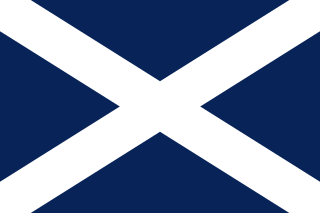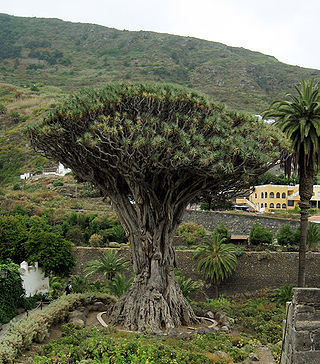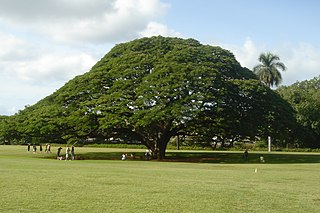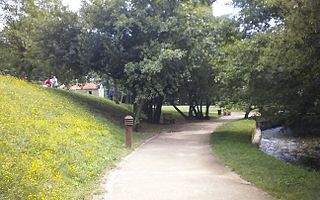
Tenerife is the largest and most populous island of the Canary Islands. It is home to 42.9% of the total population of the archipelago. With a land area of 2,034.38 square kilometres (785.48 sq mi) and a population of 948,815 inhabitants as of January 2023, it is also the most populous island of Spain and of Macaronesia.

Icod de los Vinos is a municipality in the province of Santa Cruz de Tenerife on the island of Tenerife, in the Canary Islands (Spain), located in the northwestern part of the island. Inhabitants of Icod are known in Spanish as "icodenses".

Fitzroya is a monotypic genus in the cypress family. The single living species, Fitzroya cupressoides, is a tall, long-lived conifer native to the Andes mountains and coastal regions of southern Chile, and only to the Argentine Andes, where it is an important member of the Valdivian temperate forests. Common names include alerce, lahuén, and Patagonian cypress. The genus was named in honour of Robert FitzRoy.

Teide, or Mount Teide, is a volcano on Tenerife in the Canary Islands, Spain. Its summit is the highest point in Spain and the highest point above sea level in the islands of the Atlantic. If measured from the ocean floor, its height of 7,500 m (24,600 ft) makes Teide the third-highest volcano in the world, UNESCO and NASA rank it as Earth's third-tallest volcanic structure. Teide's elevation above sea level makes Tenerife the tenth highest island in the world.

Dracaena draco, the Canary Islands dragon tree or drago, is a subtropical tree in the genus Dracaena, native to the Canary Islands, Cape Verde, Madeira, western Morocco, and possibly introduced into the Azores.

Samanea saman is a species of flowering tree in the pea family, Fabaceae, now in the Mimosoid clade and is native to Central and South America. It is often placed in the genus Samanea, which by yet other authors is subsumed in Albizia entirely.
Emeterio Gutiérrez Albelo was a Spanish poet and participated in the Generación del 27.

TITSA is the Transportes interurbanos de Tenerife, S.A. which operates almost all public bus services in Tenerife, on the Canary Islands. It carries over 60 million travellers a year in a fleet of approximately 600 vehicles.
Iriome González González, known simply as Iriome, is a Spanish former professional footballer who played as a midfielder.

Icod or Icode was one of nine menceyatos that had divided the island of Tenerife after the death of mencey Tinerfe.
Jesús Álvaro García is a Spanish footballer who plays for Córdoba CF as a left back.

Pilancones Natural Park is located in San Bartolomé de Tirajana municipality on the island of Gran Canaria, Spain. Its area is 5794.4 ha. It adjoins Roque Nublo country park to the north, and Fataga protected area to the east. The park plays an important role in soil protection and the replenishment of an aquifer, along which there are several ravines running southward which are of geomorphological interest and landscape value. The pine forests on hilltops are a well-preserved habitat with abundant bird life. The park also harbours several varieties of cactus and spurge, and a number of aquatic habitats. The park takes its name from natural pools, formerly known locally as pilancones, which remain after the runoff of water. Throughout the area there are threatened animal and plant species, and features of scientific interest.

The Cave of the Guanches, or Archaeological area of the Cave of the Guanches, is an important archaeological site located in the north of the island of Tenerife.
The Hospital del Norte de Tenerife is located in the municipality of Icod de los Vinos, in the north of the island of Tenerife.

Drago Park is a park and one of the main visitor attractions in Icod de los Vinos, Tenerife. Created at the turn of the millennium, it contains El Drago Milenario, a dragon tree thought to be around 1,000 years old, as well as a variety of other native plants.

The Gafos Park is a public park located in Pontevedra, Spain. It is a linear park surrounding the Gafos River, which runs through the south of the city from east to west.

The Dragos Gemelos are two entwined Dracaena draco trees in Breña Alta, La Palma, Canary Islands. They are said to represent twin brothers who both fell in love with the same woman, and fought to the death, with the woman planting the twin trees to remember them.

Dracaena tamaranae, or drago de Gran Canaria, is a species of flowering plant endemic to the island of Gran Canaria, related to the dragon tree, Dracaena draco, and other species of Dracaena from East Africa. Since 1972, specimens of dragon tree have been identified in Gran Canaria with certain peculiarities. These were initially identified as specimens of Dracaena draco. However, a more detailed study concluded that it corresponded to a new species.














